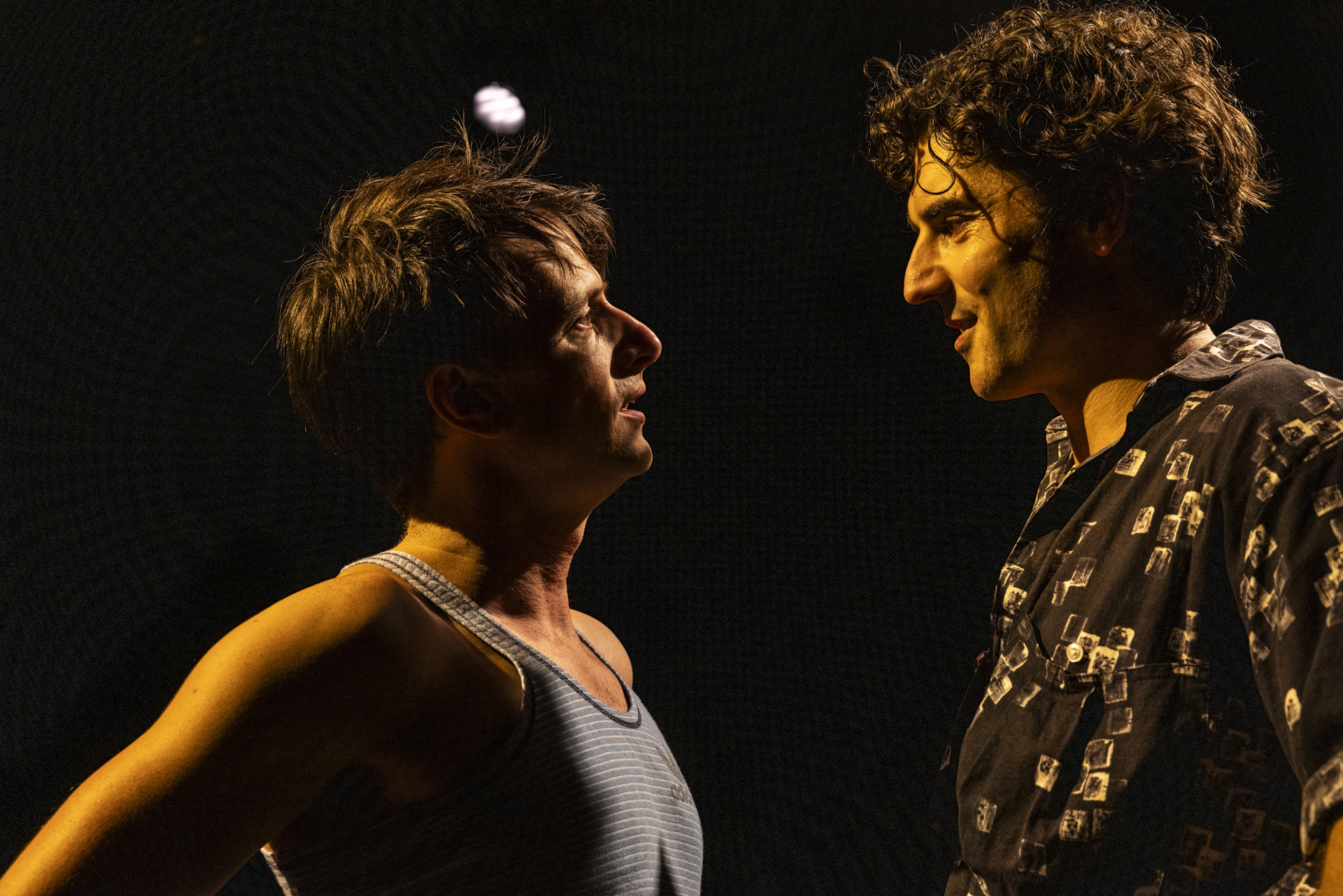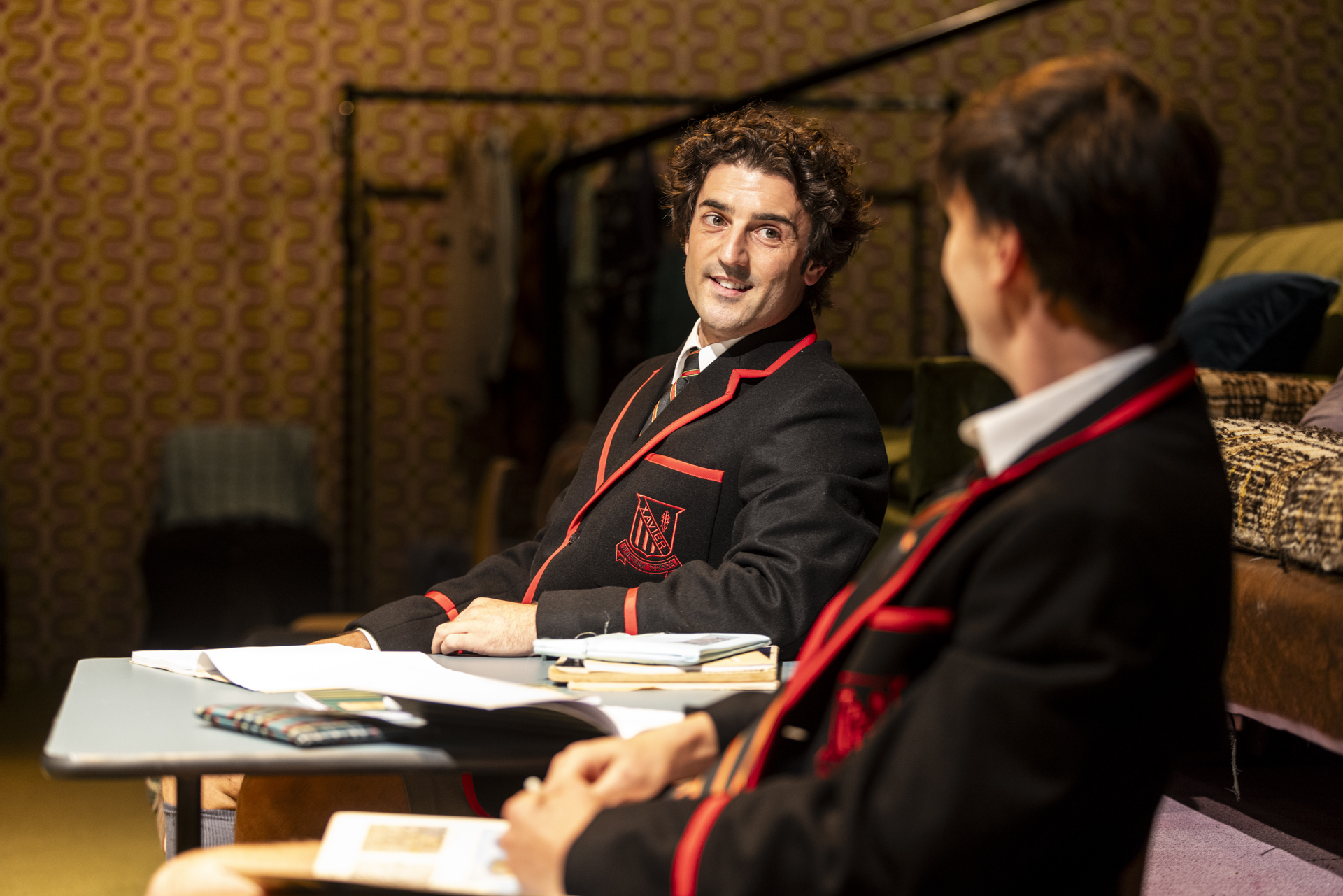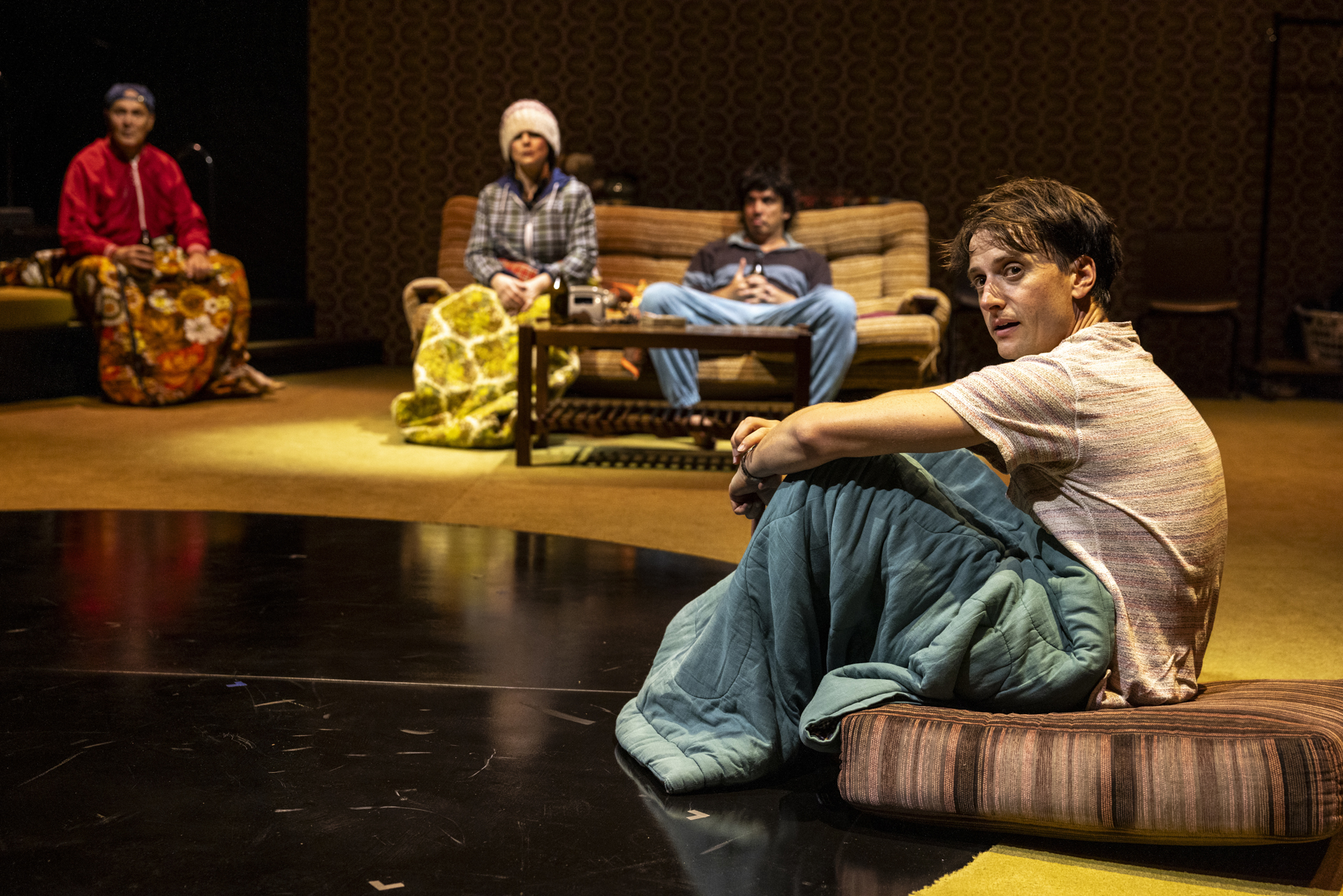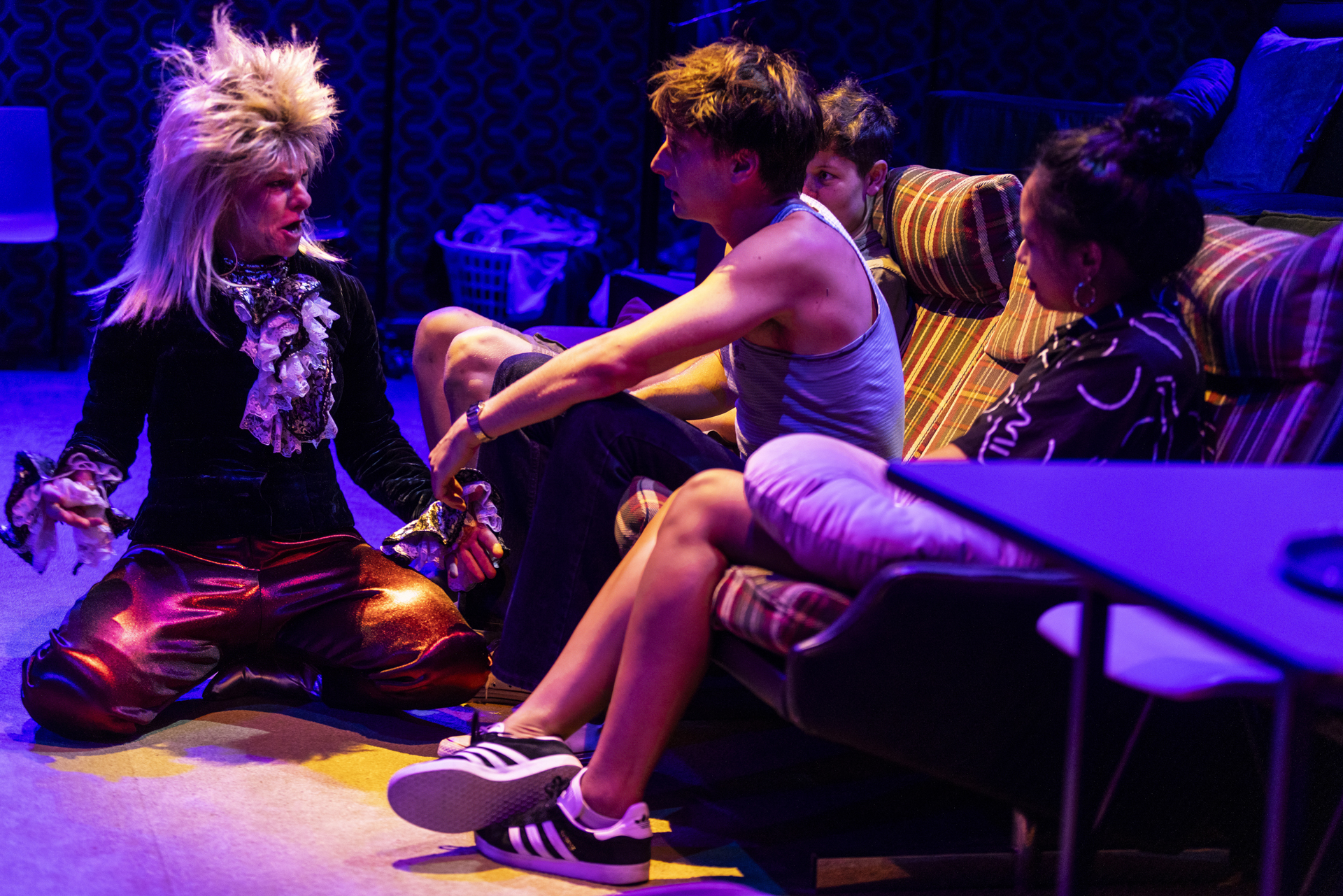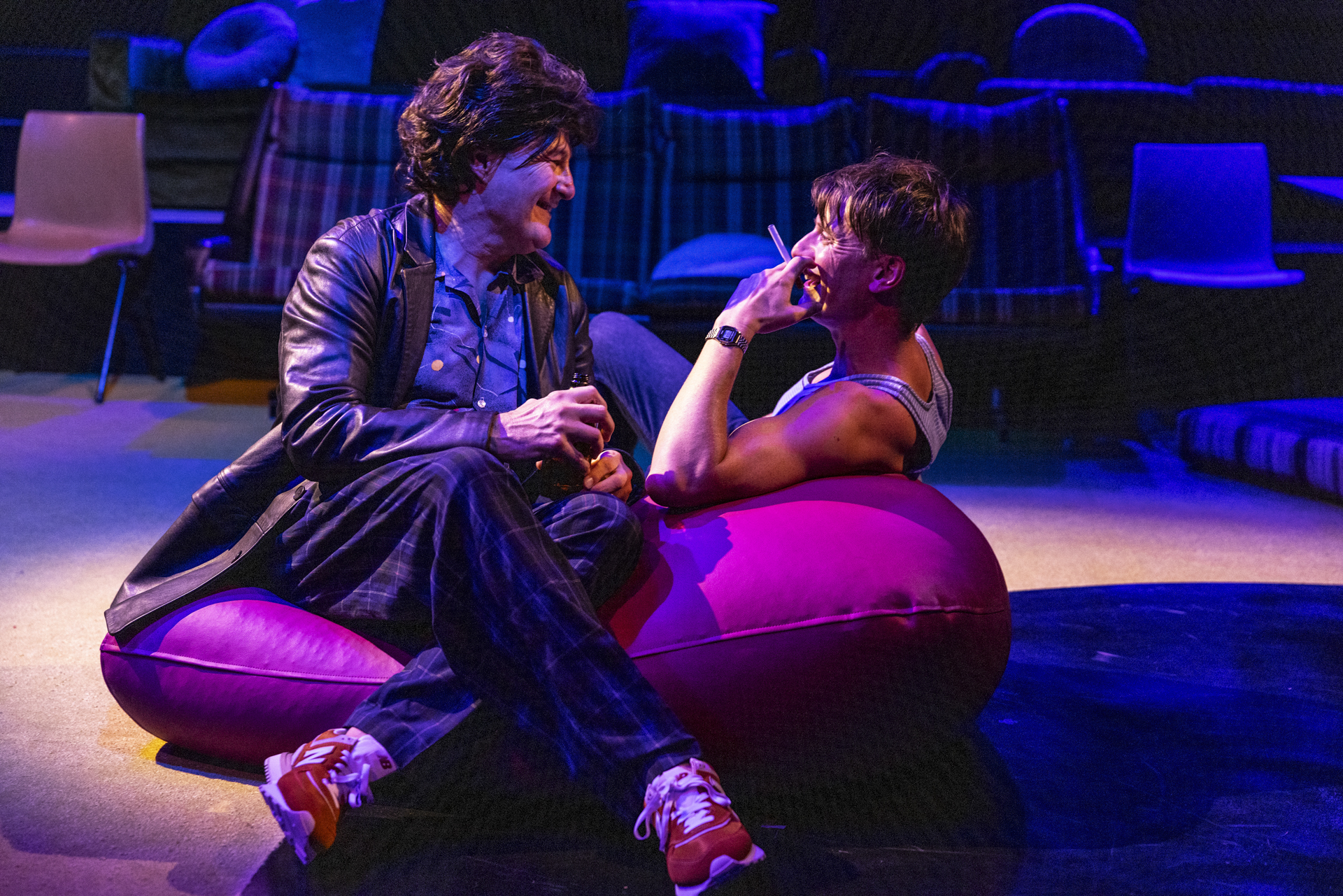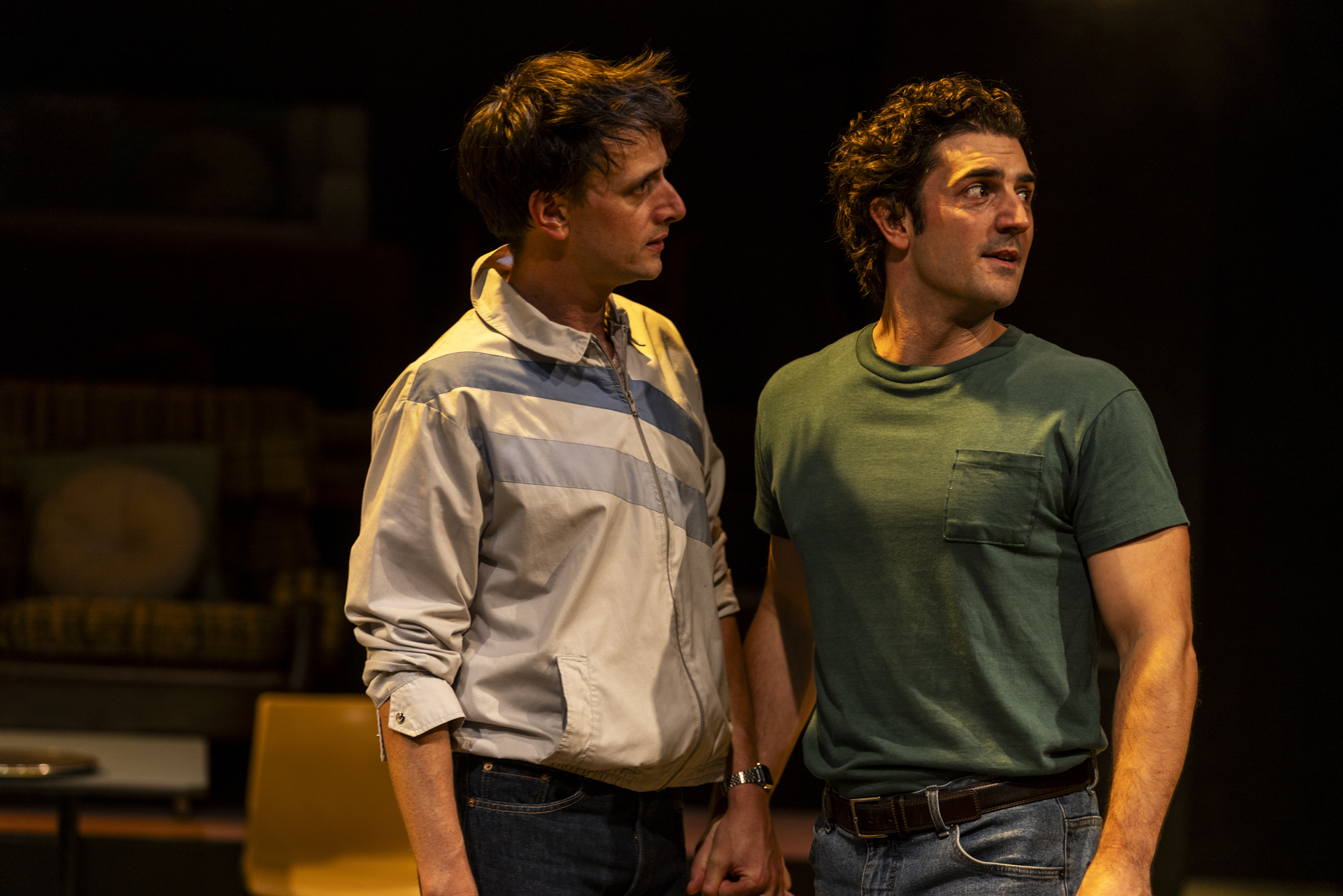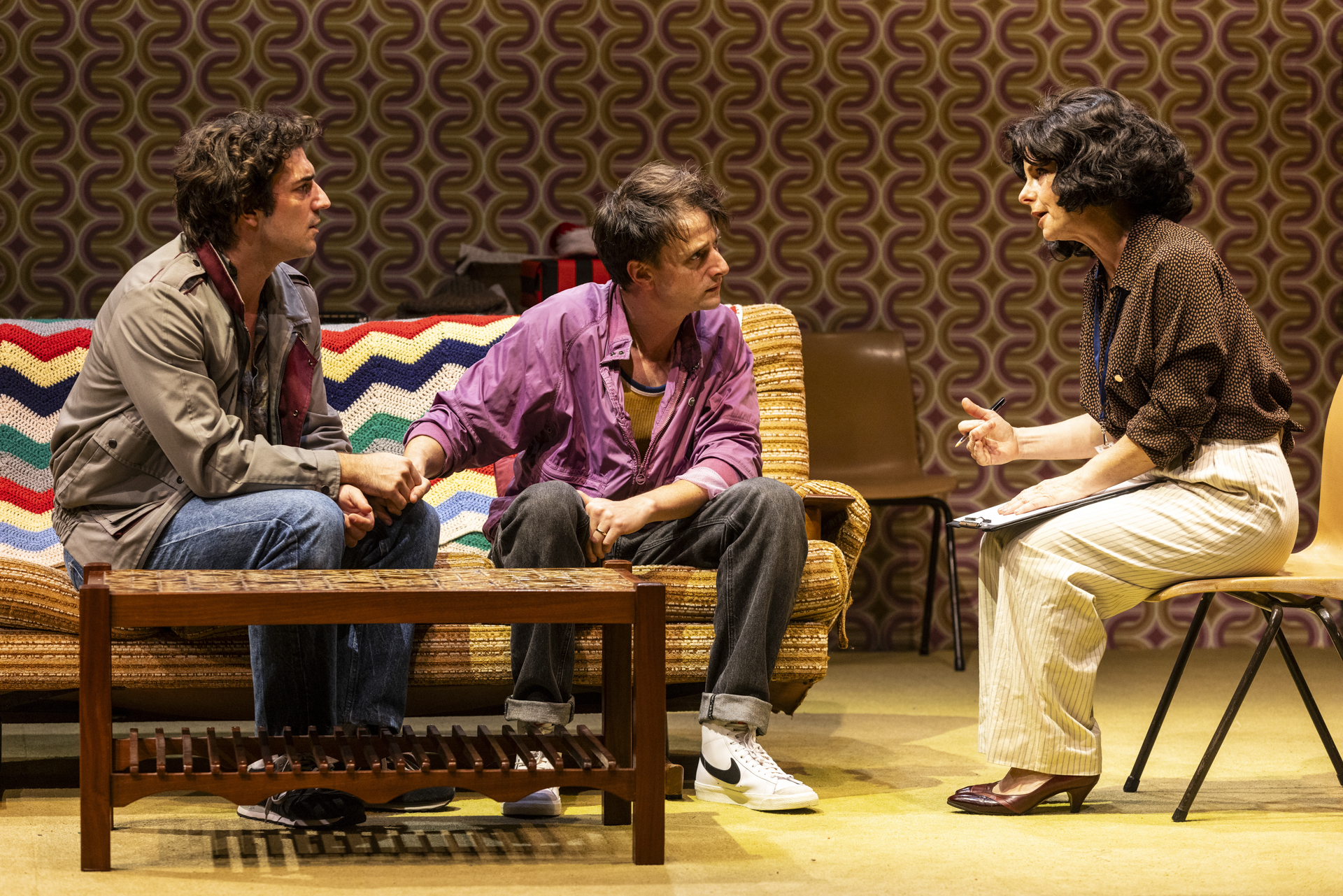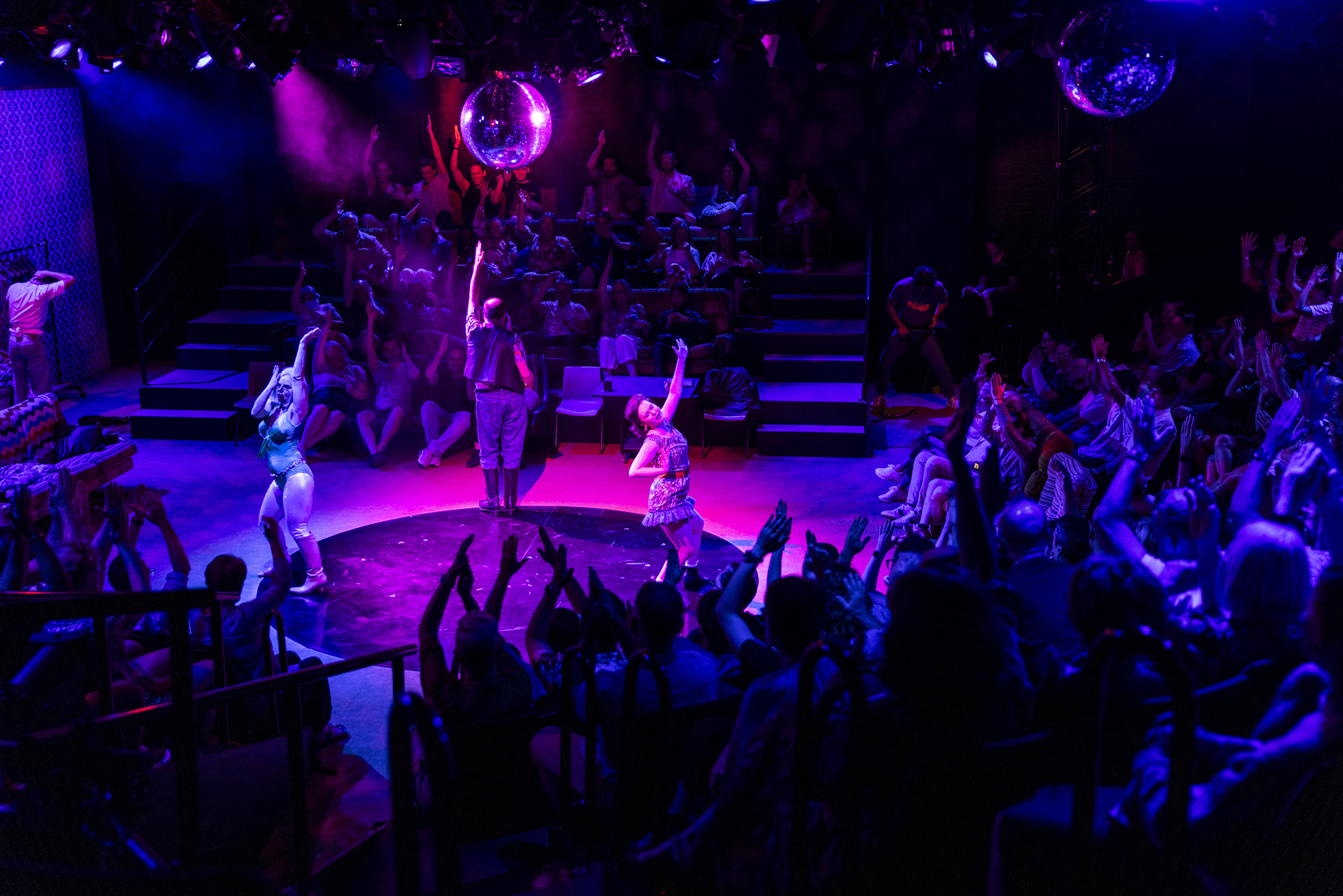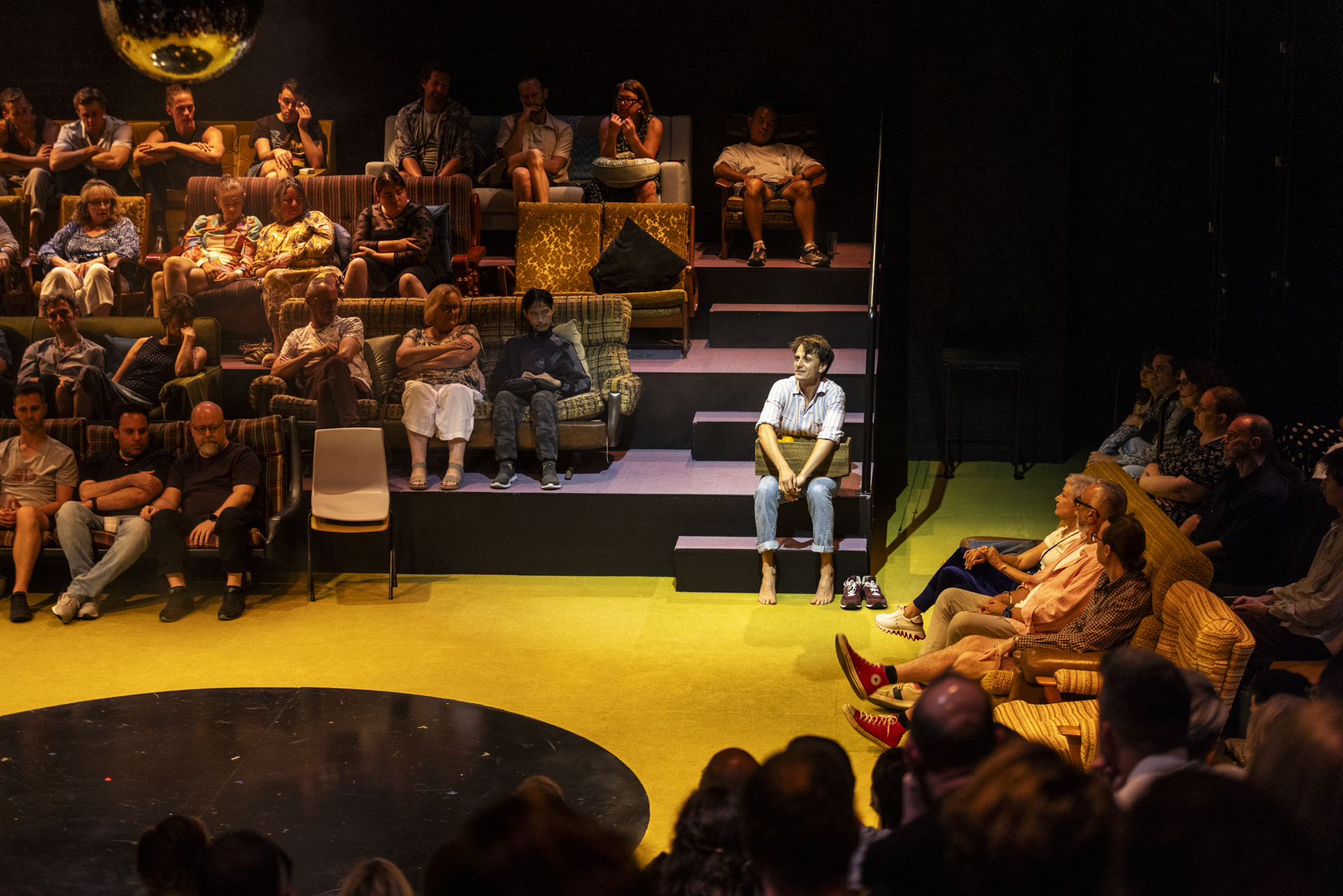N.B. This review features minor spoilers
Achingly beautiful and gut-wrenchingly tragic, Tommy Murphy’s seminal queer play Holding the Man is a brutally real portrait of queer love and loss in 1970s Australia. The story reminds us of how far we as a society have come, as well as what we’d rather forget.
An adaptation of Timothy Conigrave’s 1995 memoir of the same name, the play debuted at the Griffin Theatre Company in 2006 and went on to become a feature-length film in 2015. It’s now performing at Belvoir under the direction of the company’s Artistic Director Eamon Flack and starring Tom Conroy as Tim, Danny Ball as John, and supported by Russel Dykstra, Rebecca Massey, Shannen Alyce Quan, and Guy Simon.
From the bright orange patterned wallpaper to the tray of coloured coupe glasses on the table, Stephen Curtis’s set design transports us into 1970s Australia, where we meet Tim.
As he enters adolescence, Tim is eager to explore his sexuality. “My god, I’m a poofter,” Conroy delivers to the audience. We see Tim recount some of his earliest sexual experiences to his friend Juliet (Quan), whom we first meet when she enters dressed as Dorothy from The Wizard of Oz.
In conversation with Juliet, we first hear of “this guy John at school”. The 1995 Tim, breaking the fourth wall, notices how John “loops lowercase I’s like we’re meant to” or self-consciously explains that certain jokes were “funny at the time”. As their relationship flourishes throughout high school, the audience is invited into Tim and John’s excitement. We watch knowingly as they sneak into locker rooms, or feign ignorance when Juliet’s mother, having invited them to stay over, apologises; “there’s only one single, sorry boys”. The sensitivity of this portrayal is owing in no small part to the tenderness brought by Conroy and Ball, a core strength of the production. Their chemistry is a force, allowing us to fall in love with them and then feel the pain of what’s to come.
Flack’s direction and Murphy’s script masterfully fuse form and content, owing to a mutual faithfulness and respect for the story’s emotional truth. The excitement of young love is expressed through a bright and fast-paced first act. Through the camp side characters and self-aware humour, we feel the distorting lens of memory and the power of hindsight. In adulthood, Conigrave knows that certain moments were only “funny at the time”. Actors quickly cycle through an array of true-to-time outfits, designed by Mel Page, on stage adding a layer of realism to the story. While some poignant moments were slightly rushed, this may be due to the original text, rather than Flack’s direction. Conigrave wrote his memoir in the months leading up to his death. However, the second act still rightly slowed as HIV/AIDS began to impact their lives. Phoebe Pilcher’s lighting became cooler and Alyx Dennison’s composition softened.
The unwavering positivity and bravery of Conigrave were expertly conveyed by Conroy, as well as through Flack’s use of harnesses to convey the larger-than-life feelings we have in our youth, literally flying into the air after another boy kisses him on the cheek. Danny Ball provides a seamless interpretation of introverted John, a perfect compliment to the more open and adventurous Tim. He’s a grounding force in Tim’s life, starkly contrasting the larger-than-life figures portrayed by Dykstra, Massey, Quan, and Simon. Imbued throughout the whole production is a deep respect for the subject matter. One can’t help but feel the personal love the team has for the story, likely strengthened by the presence of queer theatre-makers in the production, as well as the slew of personal connections. Tommy Murphy, like Timothy Conigrave, was active in student theatre before he became a student at NIDA.
In addition to an intimate portrayal of Tim and John’s life, Holding the Man illustrates a homophobic Australian society that we’re eager to forget. While studying at NIDA, classmates avoid sharing cups of water with Tim and he’s told to be less effeminate. Their friend Peter, a nurse, confides: “I can’t escape it, every patient is a friend or a lover of a friend”. The couple is frequently forced to assert the legitimacy of their relationship; John’s father erases his son’s struggle, telling John ‘“we’ve told people it’s cancer”.
As a piece of queer media, Holding the Man holds a unique place. It is not saccharine like Netflix’s Heartstopper, nor overtly political like Tony Kushner’s Angels in America. Instead, its politics exists in the protagonists’ beliefs and the inherent truth of their lives.
As I sat on the light rail home, my plus-one friend Tom texted me; “I think our generation has lost touch with what it is gay people have and continue to suffer through. I need people to see [Holding the Man] and see what it is to love and what it is these men have given you”.




